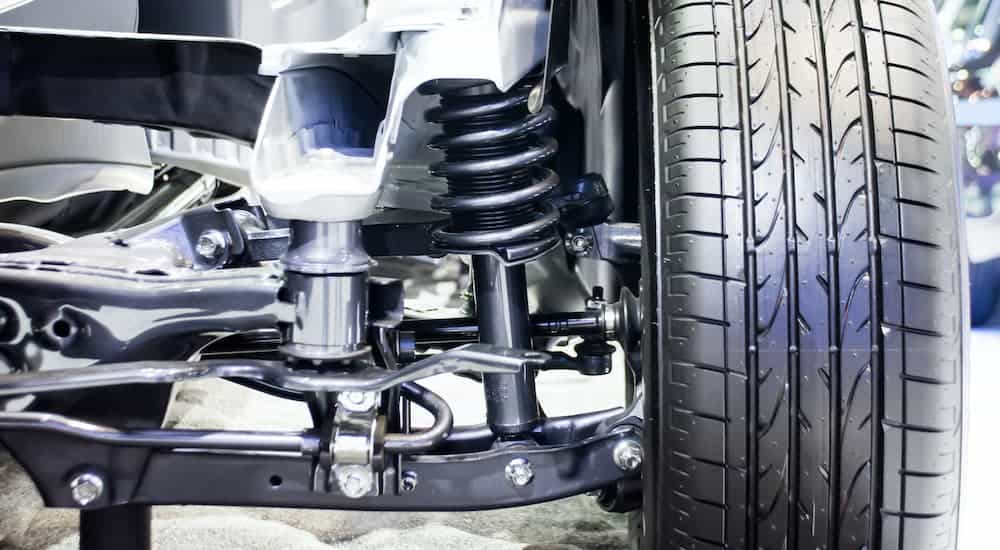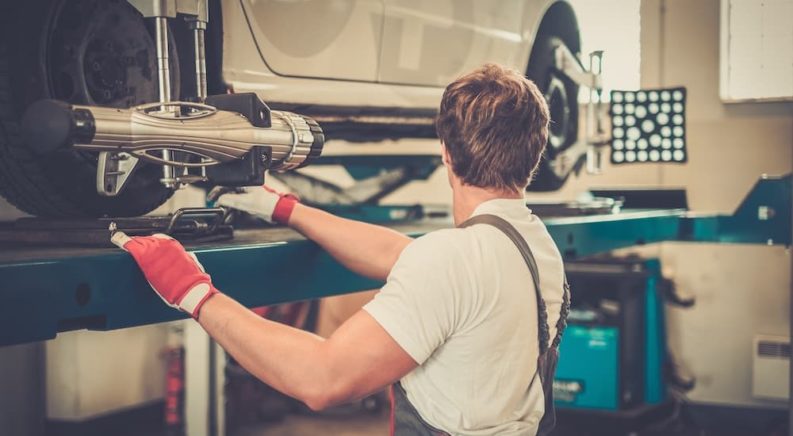Since signing the dotted line and purchasing my first vehicle years ago, I have always overseen the maintenance and repair of my vehicles. I dutifully took in my Chevrolet Equinox for routine oil changes and always remembered to have the spare tire on my Jeep Wrangler added to the rotation during scheduled tire rotations. For someone whose knowledge of car maintenance and repair was limited, I was proud of myself for maintaining my vehicles. That pride shifted a little when I married an automotive mechanic who knows the ins and outs of every engine on the market. He religiously maintains his vehicles – and now mine as well – and has taught me so much beyond driving to the dealership and waiting in the lobby as the certified technicians do an oil change, a wheel alignment, a tire rotation, etc. He’s gone to great lengths to explain the “why” for these maintenance needs and fueled my discovery of a new interest in all things automotive.
One thing that we haven’t yet covered in our discussions is wheel alignment, which begs a few questions: “What exactly is a wheel alignment?” “When do I need a wheel alignment, and how will I know when it’s needed?” and “Is this something I can do myself?” In a search for answers, here’s what I discovered.
What I Thought
I thought a wheel alignment was self-explanatory. In my mind, a technician drives the vehicle into an open bay, puts it up on the rack, and makes sure the wheels are evenly aligned to ensure the vehicle drives and performs at its best. How the technician manages this and what tools are used was beyond my knowledge. Surely the technician doesn’t just eyeball it, I thought. I also had no idea when to tell if I needed a wheel alignment. To be fair, my judgment was skewed thanks to the knobby tires on my Jeep Wrangler that caused it to dance over the road and made my steering iffy at best and downright challenging at highway speeds and in windy conditions.
What I Learned
Guess what? Technicians don’t eyeball wheel alignments. I’m sure you probably already knew that. But if you didn’t or if you’re interested in learning more about wheel alignments from a newbie, here’s a breakdown of what I learned.
Wheel alignments are vital to your vehicle’s performance and affect more than just the wheels on your vehicle. The experts at Discount Tire explain it like this: “An alignment refers to the adjustment of a vehicle’s suspension. Your suspension points your vehicle’s tires straight down the road when it is properly aligned. When your suspension goes out of alignment, it causes irregular tire wear and steering inconsistencies.”
HowStuffWorks also breaks it down in simple terms. “An alignment essentially requires squaring a car’s wheels and axles with each other so that they’re moving in the same direction. The mechanic adjusts the various suspension angles – known as toe, thrust, camber, and caster – that influence tire movement and position. The technician will also ensure that the steering wheel is centered.”

Causes of Misalignment
But what causes your vehicle to get out of alignment, and how can you tell when an alignment is needed? Misalignment can occur anytime the vehicle’s geometry or steering is altered. In layman’s terms, this can occur when your vehicle has worn out suspension parts, springs, and ball joints. These worn parts lead to a variety of issues like uneven tire wear, poor handling, and less responsive steering.
There is also a much more noticeable cause for misalignment, and that’s potholes, curbs, and other obstacles seen in and around your driving environment. You’ve likely hit a pothole, or perhaps you’ve accidentally run up against a curb, both of which jar the vehicle. This jarring, while it seems minor, can potentially set your vehicle off its alignment. Drivers typically notice this misalignment when the vehicle begins pulling to the left or the right while traveling down the road.
How an Alignment is Done
Every automotive manufacturer provides a set of standard angles for toe, camber, and caster that define the vehicle’s proper alignment. Toe, from an aerial view, is the angle at which the tires turn in or out. The proper toe angle is vital to ensuring even wear and extending the life of your tires. When looking at the vehicle from the front, camber is the vertical inward or outward angle of the tires. Caster is the forward or backward angle of the steering axis from the side view.
To perform an alignment, a mechanic will test drive the vehicle to get a better idea of the misalignment. Then, the car is hoisted so the mechanic can examine the tires and suspension for any wear and tear. After the mechanic checks the tire pressure, he or she will use an alignment machine and hook up four devices, one on each wheel. The machine is linked to a computer and allows the technician to adjust the toe, camber, and caster angles. Finally, the mechanic will center the steering wheel, and test drive the vehicle to ensure the vehicle is realigned.
Types of Alignments
One of the most notable things I learned in my research is that there is more than one type of alignment. The type of alignment your vehicle needs depends on its suspension. For example, vehicles with independent or adjustable front and rear suspensions require a four-wheel alignment. In contrast, some vehicles may only require a front-end alignment or a thrust-angle alignment.

Exceptions to the Rules
There are always a few exceptions to every rule, and that’s certainly the case with wheel alignments. I mentioned that every car manufacturer provides a set of standard angles for toe, camber, and caster for each vehicle. However, these angles are not always followed. Why?
High-performance cars and sports cars are usually exceptions to this rule because they are designed to handle differently on the road. By fine-tuning the alignment angles, drivers can better align the suspension and improve handling on the track or in extreme conditions. This, however, comes at a cost and usually leads to uneven tire wear. Of course, this is only a minor concern for high-performance vehicles destined for the racetrack.
Setting Things Straight
As you can tell, I was pretty green when it came to understanding wheel alignments. In full disclosure, a wheel alignment was never part of my vehicle maintenance. Perhaps that was simply because I didn’t know the signs to look for – improper steering and uneven tire wear. Of course, with a Jeep Wrangler destined for the trail with its knobby tires, it would’ve been difficult for me to tell if I needed an alignment or not.
Whatever the case, I have a better understanding of alignments and the importance of toe, camber, and caster. I also know what to look for and the importance of monitoring tire wear and steering to not only extend the life of my tires but the longevity of my vehicle as well. And for someone who recently traded her Wrangler in for a Ford Edge, the need to avoid potholes and curbs is all the clearer.

